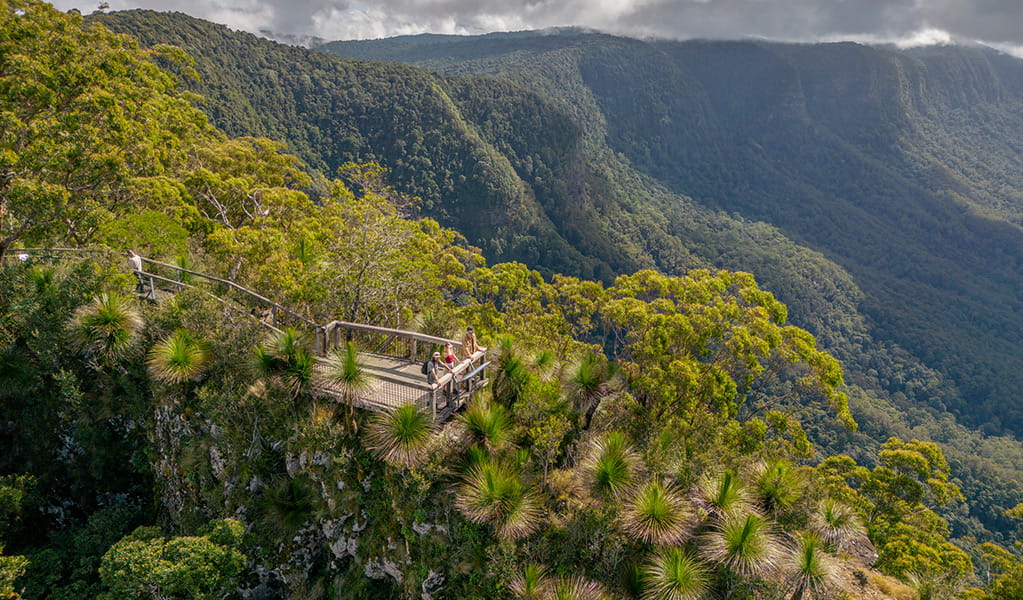Pinnacle walk and lookout
Border Ranges National Park
Overview
Take the Pinnacle walk to the lookout for uninterrupted views over the World Heritage-listed rainforest, the crater escarpment, Wollumbin (Mount Warning) and the Tweed Valley.
- Where
- Border Ranges National Park in North Coast
- Accessibility
- Hard
- Distance
- 0.6km return
- Time suggested
- 30 - 45min
- Grade
- Grade 2
- Entry fees
- Park entry fees apply
- What to
bring - Drinking water, hat, sunscreen
- Please note
- The road to Pinnacle walk and lookout is a well-maintained gravel road; however, following heavy rains between December to May, the surface can be rough or slippery in parts
Without a doubt, the journey along the Pinnacle walk to Pinnacle lookout is one of the highlights of the whole park and not to be missed.
It’s a short walk through World Heritage-listed rainforest before the track reaches Pinnacle lookout. You’re bound to be mesmerised by uninterrupted views of the whole park along with spectacular 360° views all the way to the coastline, the crater escarpment and to Wollumbin (formerly known as Mount Warning).
If you’re an early riser, and even if you aren’t, it’s definitely worth making the effort to see the silhouette of Wollumbin when the sun rises – it’s a completely inspiring way to start your day in Border Ranges National Park.
Take a virtual tour of Pinnacle walk and lookout captured with Google Street View Trekker.
You might also like
-

Border Ranges 360 experiences
Discover some of the rare and remarkable animals, plants and habitats that make Border Ranges National Park special, with our interactive 360-degree images.
Map
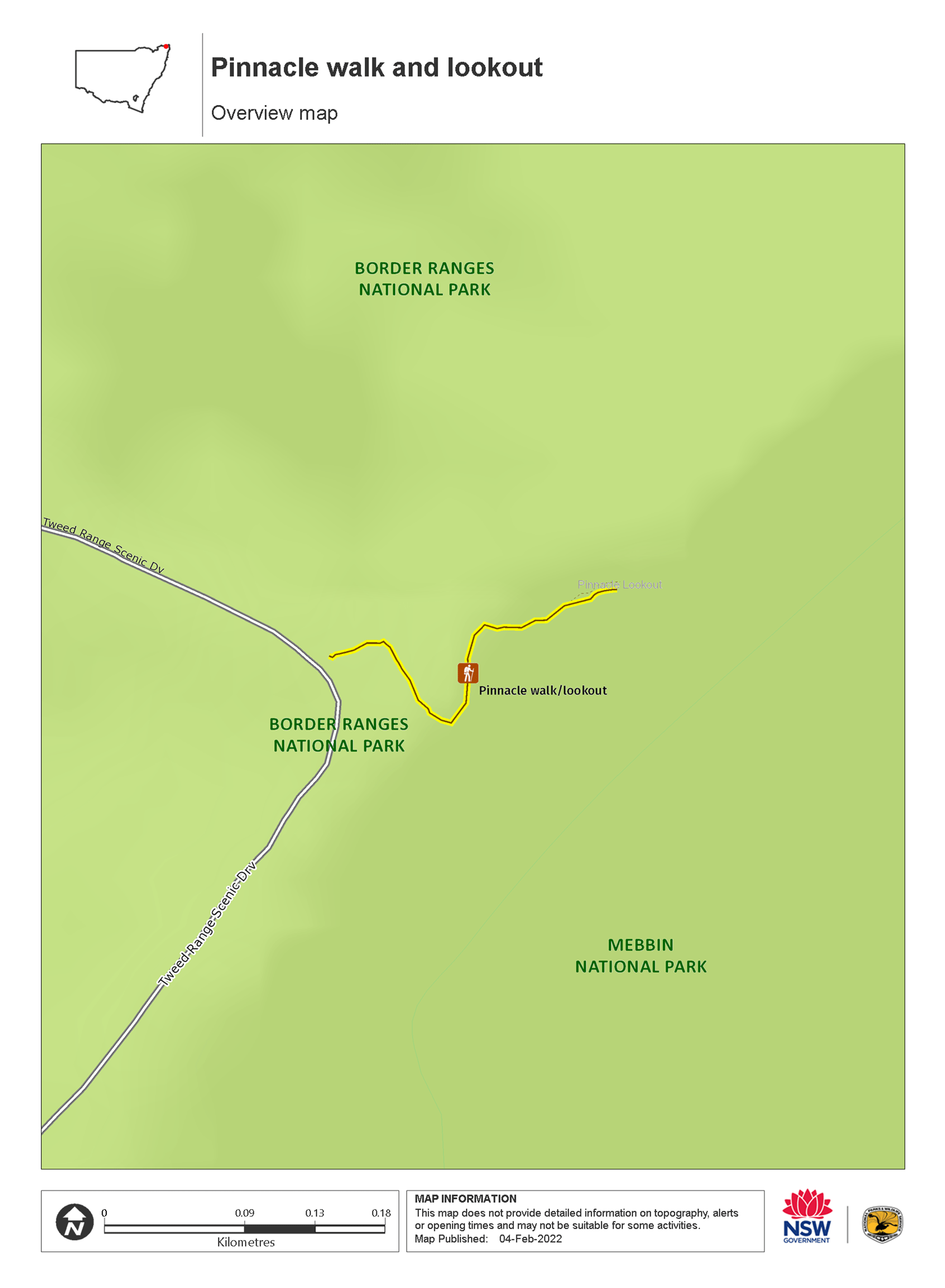
Map legend

Local alerts
For the latest updates on fires, closures and other alerts in this area, see https://www.nationalparks.nsw.gov.au/things-to-do/walking-tracks/pinnacle-walk-and-lookout/local-alerts
General enquiries
- National Parks Contact Centre
- 7am to 7pm daily
- 1300 072 757 (13000 PARKS) for the cost of a local call within Australia excluding mobiles
- parks.info@environment.nsw.gov.au
Park info
- in Border Ranges National Park in the North Coast region
Border Ranges National Park is always open but may have to close at times due to poor weather or fire danger.
-
Park entry fees:
$8 per vehicle per day.
Buy annual pass.
Visitor info
All the practical information you need to know about Pinnacle walk and lookout.
Track grading
Features of this track
Distance
0.6km return
Time
30 - 45min
Quality of markings
Clearly sign posted
Experience required
No experience required
Gradient
Gentle hills: The walk has gentle hills but becomes moderately steep in sections.
Quality of path
Formed track: The track is 1m-wide hard-packed ground along its length, with concrete steps at various points along the track. There's a fibreglass walkway with handrails at the end of the track as you approach the timber lookout platform.
Steps
Occasional steps: There are 10 concrete steps along the walk. Most are located towards the start of the track, but there are also 2 steps onto the raised walkway that leads to the lookout platform.
Other barriers
Pinch points: There's a section of the walk where the path narrows due to plants growing along the track.
Getting there and parking
Get driving directions
Pinnacle walk is accessed via the Tweed Range Scenic drive.
To get there:
- Take Williams Road from Kyogle, turn into Creegan Road (which becomes Tweed Range Scenic drive)
- Travel 23km along Tweed Range Scenic drive until you reach the Pinnacle walk
Vehicle access
- 2WD vehicles
Weather restrictions
- 4WD required in wet weather
Parking
Parking is available in a gravel carpark at the start of Pinnacle walk.
Best times to visit
There are lots of great things waiting for you in Border Ranges National Park. Here are some of the highlights.
Autumn
A picnic at Border Loop lookout and picnic area is a must during autumn. It's also a popular spot to see the historic Border Loop railway line.
Spring
The perfect time to get away from it all on a family camping trip. Sheepstation Creek campground is a great base for exploring Border Ranges National Park.
Summer
Watching the sunrise from Pinnacle lookout offers the best views of the crater escarpment, Wollumbin-Mount Warning and the coast. You're bound to find it a breathtaking experience.
Winter
Take in the park's scenery from the comfort of your car or motor home as you drive along the Tweed Range Scenic drive. Be sure to take some breaks along the way though – you don't want to miss the views.
Weather, temperature and rainfall
Summer temperature
Average
18°C and 30°C
Highest recorded
42.9°C
Winter temperature
Average
8°C and 22°C
Lowest recorded
-0.3°C
Rainfall
Wettest month
February
Driest month
September
The area’s highest recorded rainfall in one day
321mm
Facilities
The nearest toilet and picnic facilities are located along Tweed Scenic Drive at Blackbutts and Bar Mountain picnic areas, or at Antarctic Beech, Forest Tops or Brindle Creek in the other direction.
Maps and downloads
Accessibility
Disability access level - hard
Pinnacle walk is a 1m-wide hard-packed ground track with a lookout platform at the end. There are sections along the track where people with reduced mobility may need assistance:
- The track has 10 concrete steps. Most of the steps are at the start of the walk, but there are also 2 steps to get onto the raised walkway that leads to the lookout platform at the end of the walk.
- Although the track is mostly gentle hills, there are points where the walk can get moderately steep.
- There's a section where the walk narrows due to plants growing along the track.
Prohibited
Pets
Pets and domestic animals (other than certified assistance animals) are not permitted. Find out which regional parks allow dog walking and see the pets in parks policy for more information.
Smoking
NSW national parks are no smoking areas.
Learn more
Pinnacle walk and lookout is in Border Ranges National Park. Here are just some of the reasons why this park is special:
Aboriginal heritage
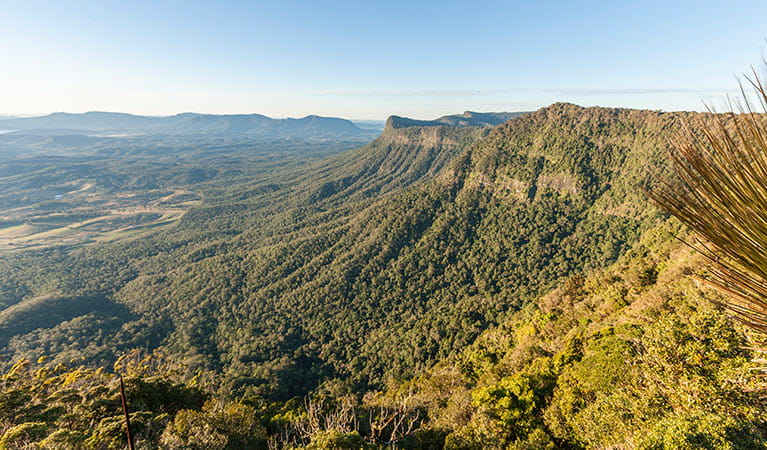
The dramatic landscapes of the Border Ranges National Park echo the historical ties connecting the region's Aboriginal people to Country. The Githabul People trace their identity and spirituality to this Country and it is central to their Dreaming. The park protects many ancient sites and continues to be a place of great significance today.
Abundant wildlife
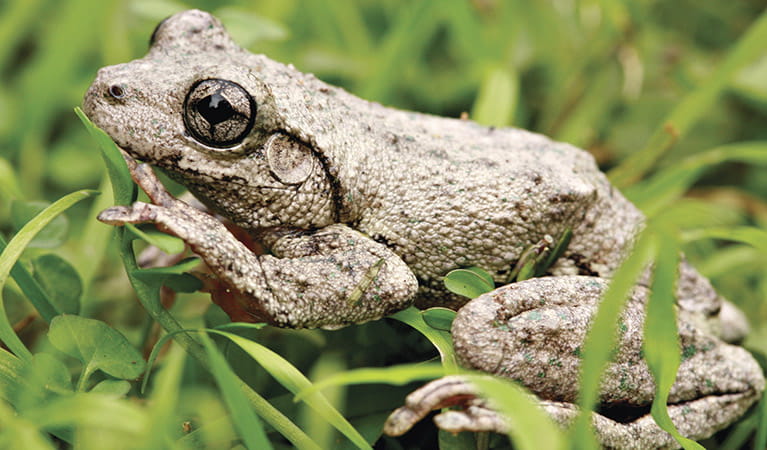
Being part of the Gondwana Rainforests of Australia World Heritage Area, makes this park a truly special place to visit. This region has the highest concentration of marsupial, bird, snake and frog species in Australia, so you're bound to come across a cute creature or two during your visit. While you're in the heart of this remarkable rainforest make sure you listen out for the call of the Alberts lyrebird, and while you're picnicking, keep your eye out for the rare, local fauna that thrive in this lush, protected wilderness.
- Border Loop walk Walk the short and easy Border Loop walk through World Heritage-listed rainforest. Enjoy spectacular views from the lookout and finish with a picnic at the end.
- Border Ranges 360 experiences Discover some of the rare and remarkable animals, plants and habitats that make Border Ranges National Park special, with our interactive 360-degree images.
Picture perfect
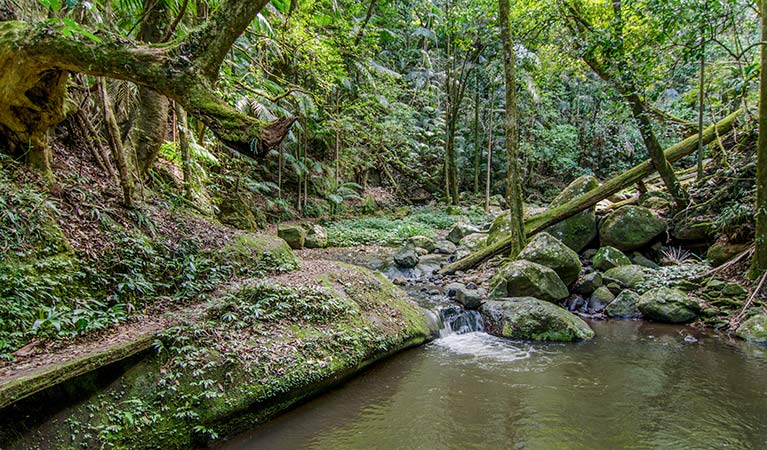
A landscape photographer's dream, you'll be spoilt for choice in trying to capture the sheer scale and beauty of this epic rainforest from the many lookouts dotted throughout the park. Be sure to carry your camera up to the Pinnacle lookout at sunrise for a breathtaking birds-eye view of the crater escarpment all the way down to the NSW coastline. Don't forget to change your camera setting to panoramic for the perfect mantelpiece shot.
World Heritage wonder
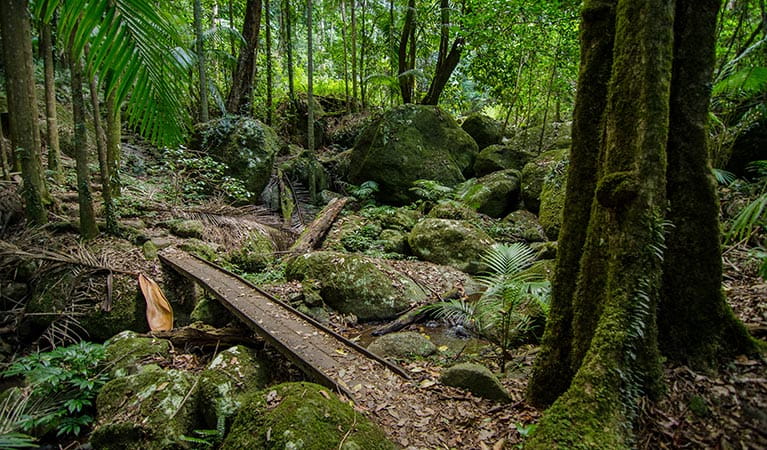
The rainforests of the Border Ranges National Park are part of the Gondwana Rainforests of Australia World Heritage Area. World Heritage Areas are irreplaceable sources of life and inspiration - places of such value that the international community has agreed they must be conserved for all time. You can explore this World Heritage-listed rainforest on one of the many walking tracks, like the short Pinnacle walk that provides spectacular views of Wollumbin and the Tweed Valley 1km below.
- Bar Mountain circuit Take the short and easy Bar Mountain circuit walk to the lookout where you’ll enjoy panoramic views of World Heritage-listed rainforest.
- Border Loop walk Walk the short and easy Border Loop walk through World Heritage-listed rainforest. Enjoy spectacular views from the lookout and finish with a picnic at the end.
- Border Ranges 360 experiences Discover some of the rare and remarkable animals, plants and habitats that make Border Ranges National Park special, with our interactive 360-degree images.
- Brindle Creek picnic area Pack up a picnic and set off along the Tweed Range Scenic drive to explore Border Ranges National Park. Stop off at Brindle Creek picnic area for a picnic and walk.
Plants and animals protected in this park
Animals
-
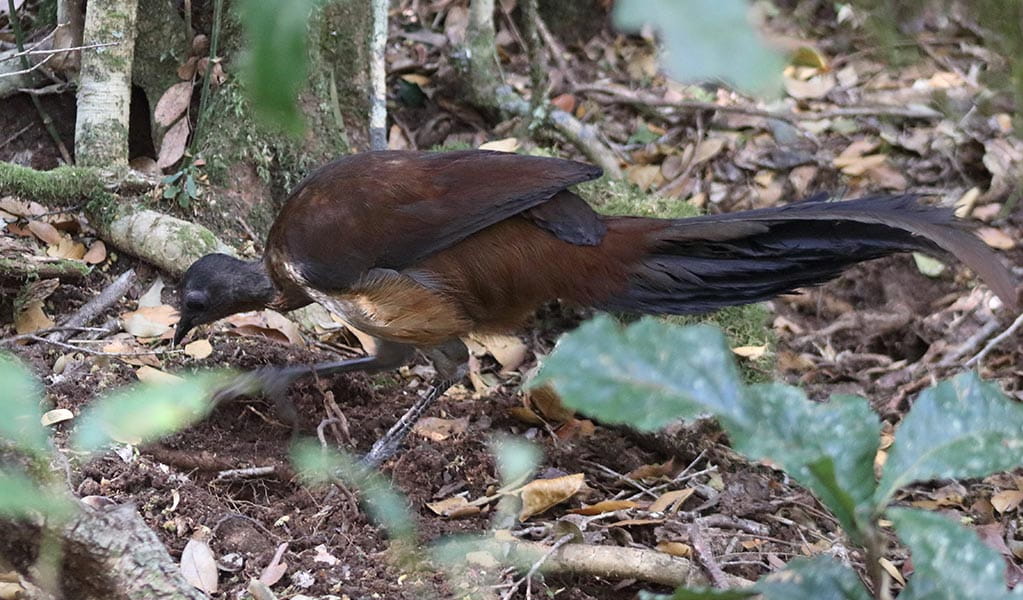
Albert's lyrebird (Menura alberti)
The Albert’s lyrebird is much rarer than the superb lyrebird. Distinguished by its richer brown plumage and less elaborate tail feathers, it’s protected as a threatened species in NSW.
-
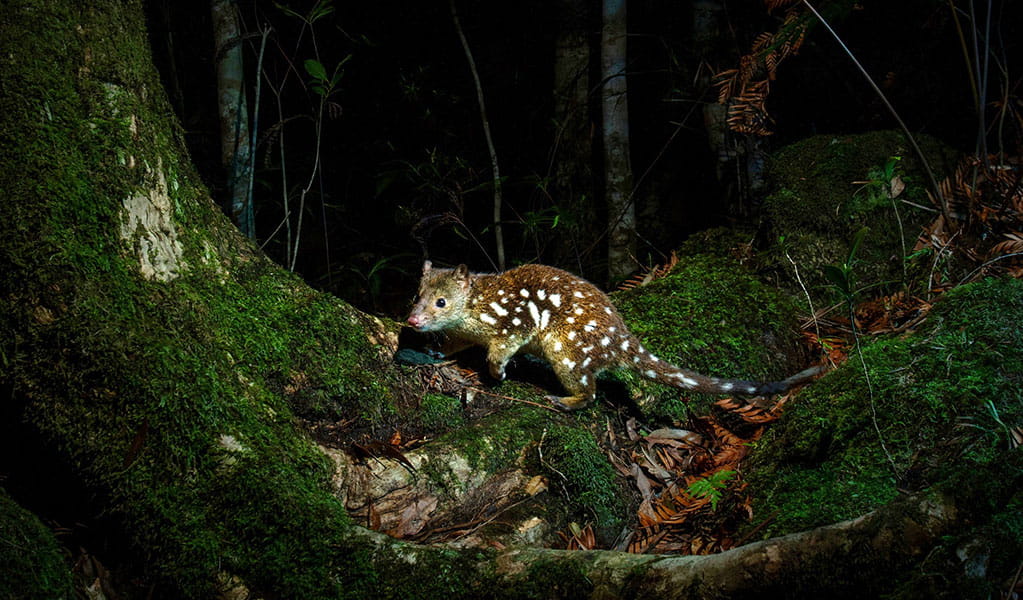
Spotted-tailed quoll (Dasyurus maculatus)
The spotted-tailed quoll is the largest remaining carnivorous marsupial on the Australian mainland. It’s protected as a vulnerable species in NSW.
-
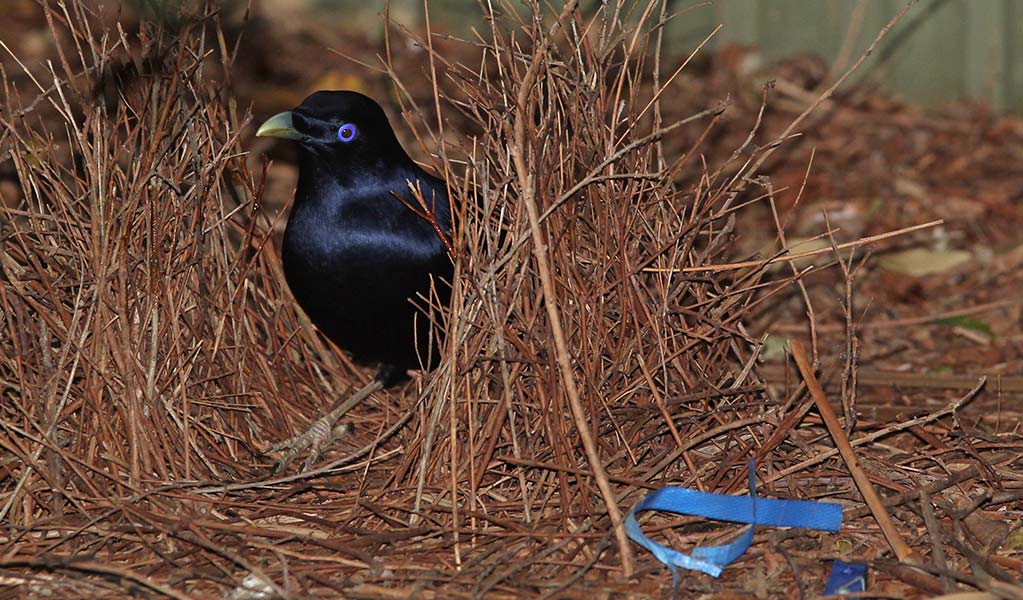
Satin bowerbird (Ptilonorhynchus violaceus)
With vibrant blue-violet eyes and curious antics, the satin bowerbird is a favourite for bird watching and easy to spot as it forages for food in open forest. Relatively common across eastern Australia, in NSW they’re found in coastal rainforests and adjacent woodlands and mountain ranges.
-
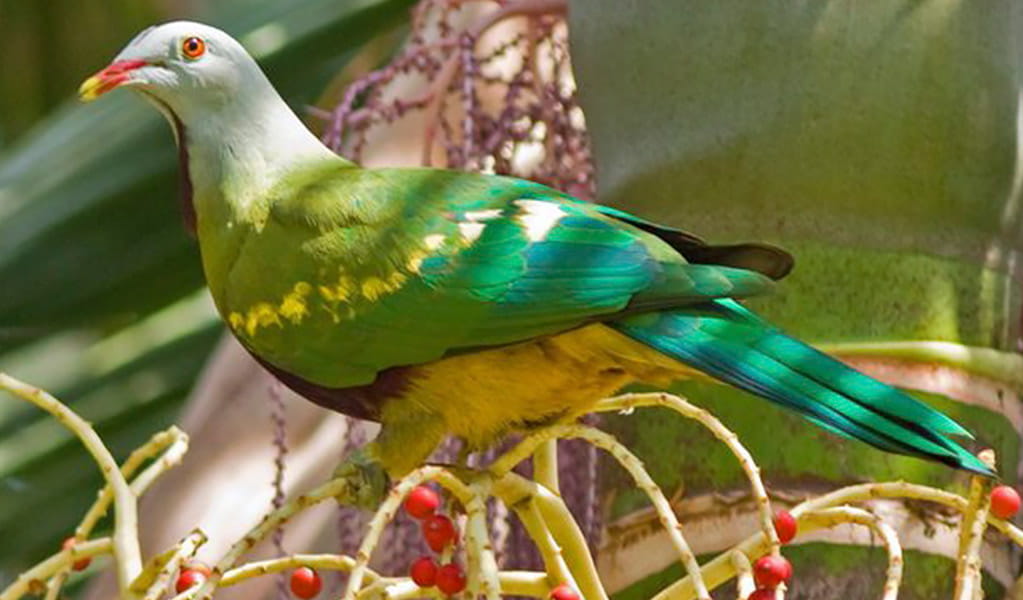
Wompoo fruit-dove (Ptilinopus magnificus)
The wompoo fruit-dove is a marvellously multi-coloured pigeon that makes its home in rainforest along coastal ranges from mid-north NSW to southern Queensland. It’s protected as a vulnerable species in NSW.
-
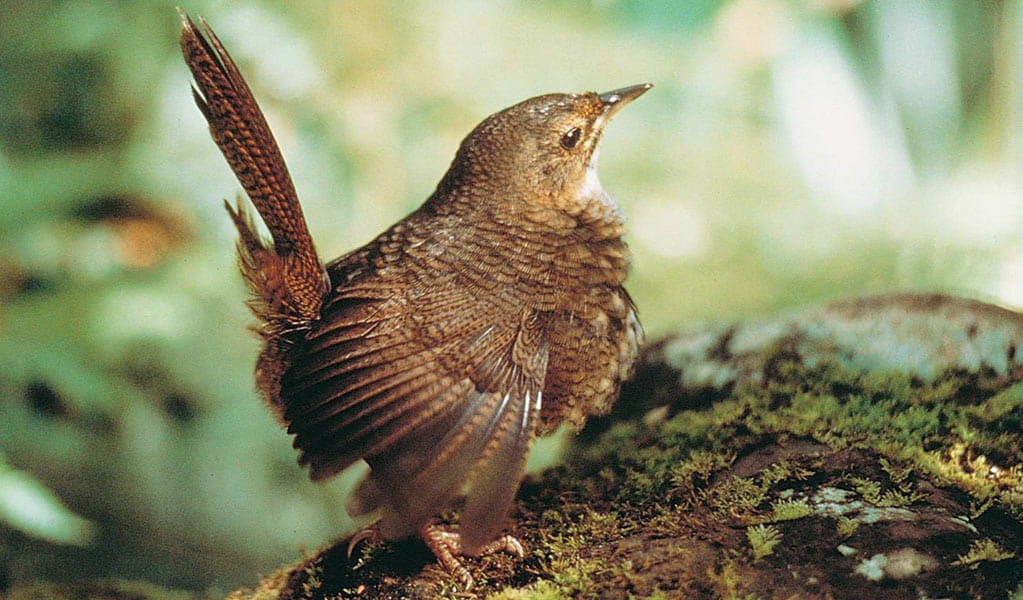
Rufous scrub-bird (Atrichornis rufescens)
The vulnerable rufous scrub-bird is a small, ground-foraging bird that lives only in isolated rainforest areas of south-eastern Australia.
-

Common ringtail possum (Pseudocheirus peregrinus)
Commonly found in forests, woodlands and leafy gardens across eastern NSW, the Australian ringtail possum is a tree-dwelling marsupial. With a powerful tail perfectly adapted to grasp objects, it forages in trees for eucalypt leaves, flowers and fruit.
-
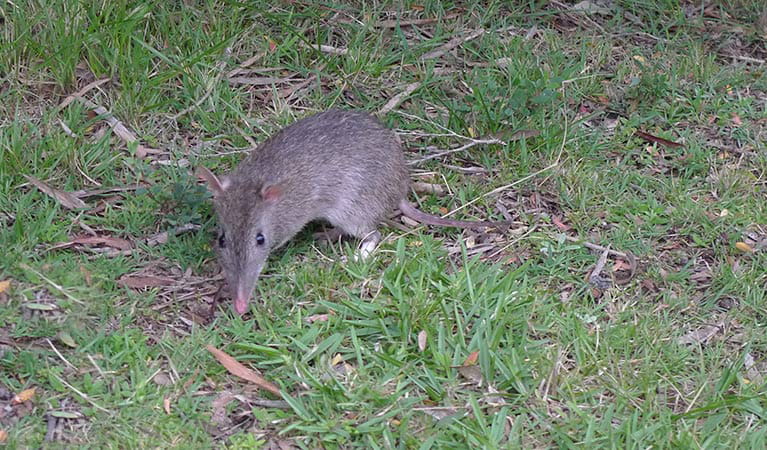
Long-nosed bandicoot (Perameles nasuta)
A nocturnal marsupial and one of the smaller Australian native animals, the long-nosed bandicoot is found across eastern Australia. Populations in the Sydney region have dwindled since European settlement, leaving only endangered colonies in inner western Sydney and at North Head, near Manly. The long-nosed bandicoot has grey-brown fur and a pointed snout which it uses to forage for worms and insects.
-
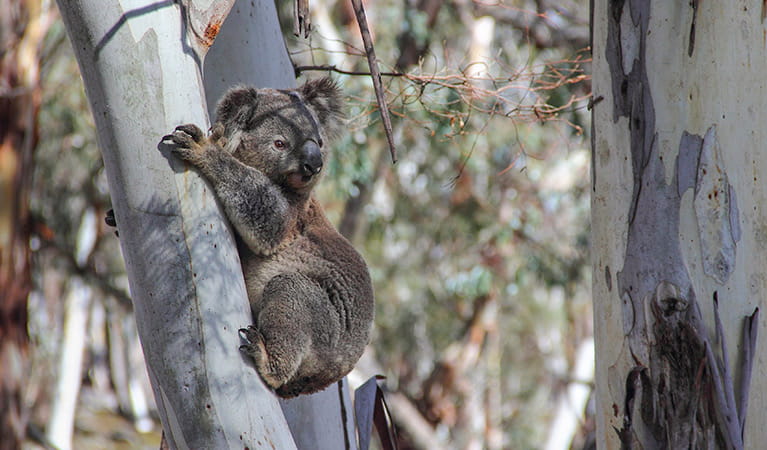
Koala (Phascolarctos cinereus)
One of the most renowned Australian animals, the tree-dwelling marsupial koala can be found in gum tree forests and woodlands across eastern NSW, Victoria and Queensland, as well as in isolated regions in South Australia. With a vice-like grip, this perhaps most iconic but endangered Australian animal lives in tall eucalypts within a home range of several hectares.
-
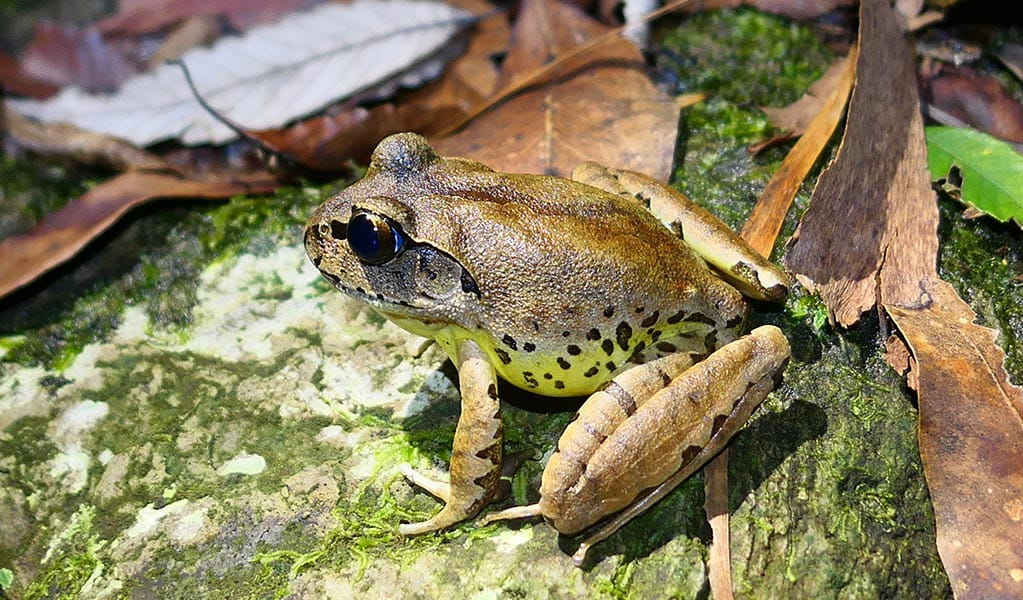
Fleay's barred frog (Mixophyes fleayi)
The Fleay’s barred frog is an endangered species restricted to rainforest stream habitats in north-east NSW and south-east Queensland.
-
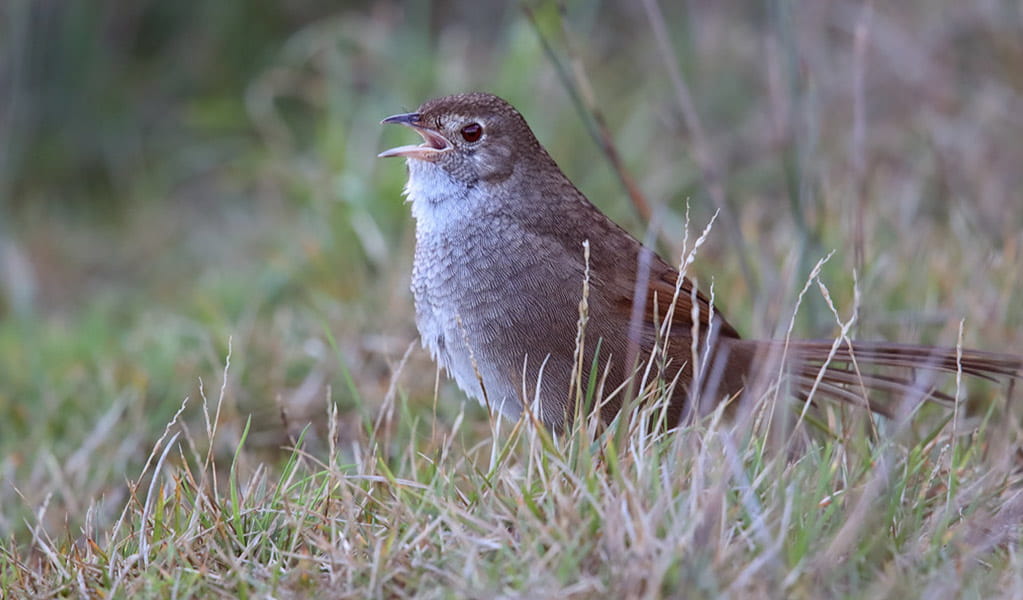
Eastern bristlebird (Dasyornis brachypterus)
The endangered eastern bristlebird is a shy, ground-dwelling songbird. Less than 2,500 birds are left in the wild, restricted to 3 isolated areas in eastern NSW and southern Queensland.
Plants
-

Grass tree (Xanthorrea spp.)
An iconic part of the Australian landscape, the grass tree is widespread across eastern NSW. These Australian native plants have a thick fire-blackened trunk and long spiked leaves. They are found in heath and open forests across eastern NSW. The grass tree grows 1-5m in height and produces striking white-flowered spikes which grow up to 1m long.

